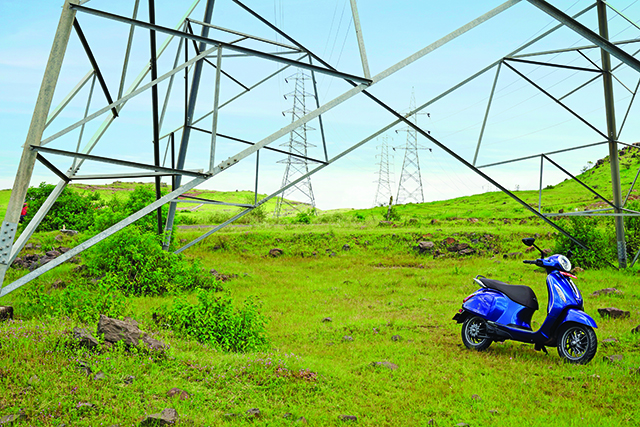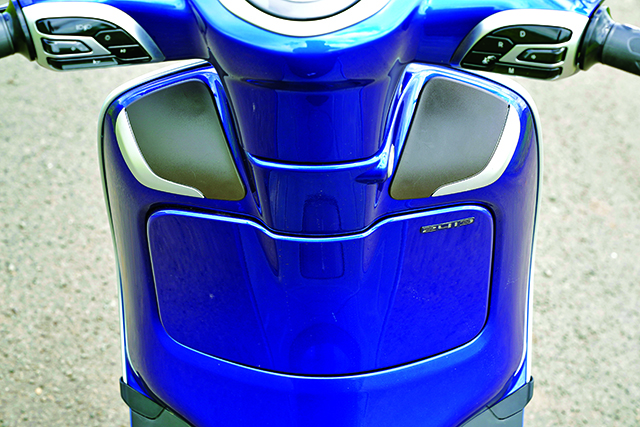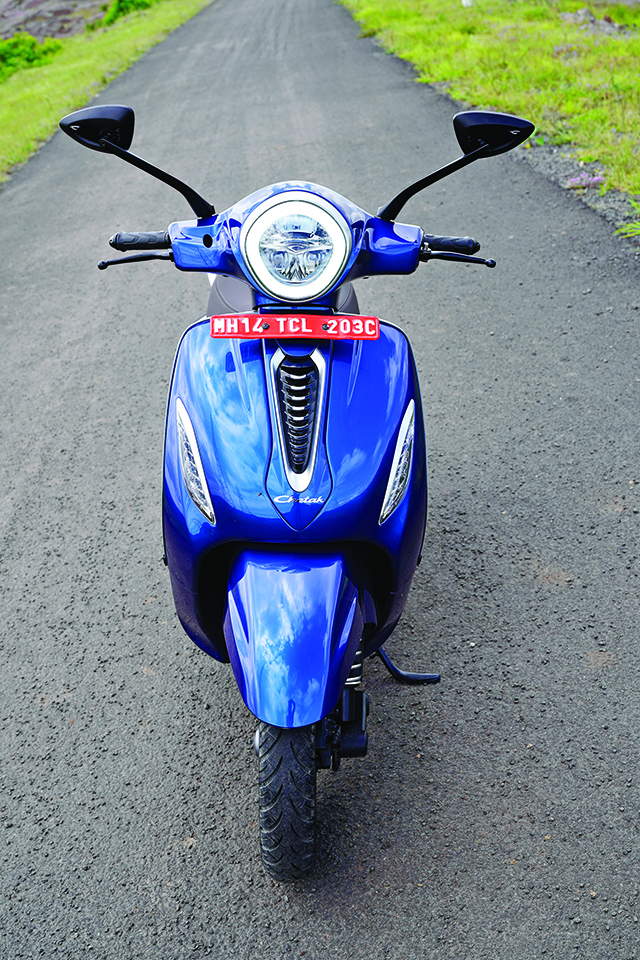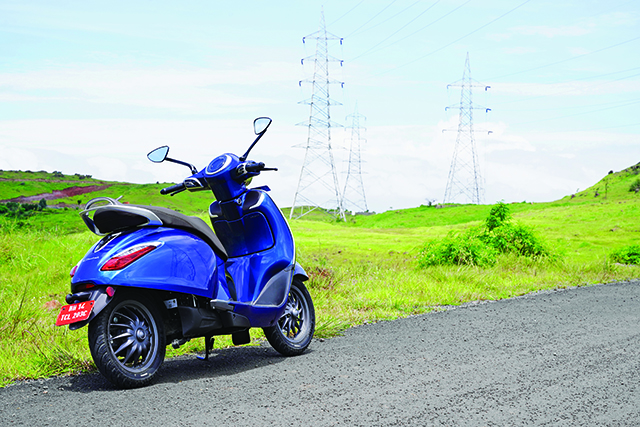The 2022 Chetak has minimal changes. Is it enough?

Story: Joshua Varghese
Photography: Sanjay Raikar
The Chetak in its EV avatar was launched a couple of years ago and it was without doubt the most elegant thing on two wheels to wear a green registration number-plate. That has not changed with the latest update because it continues to be the most beautiful electric scooter in India. That’s great news, but with this 2022 update not much has changed overall either.
Localization is the biggest update in respect of this new scooter. Bajaj claim that more than 90 per cent of the Chetak is now produced indigenously, the battery and chips being the only exceptions. Furthermore, they announced that the thermal management has been improved and we did not face any heating issues during our test ride.

The latest model gets a “2413” badge on the front apron and that is the only visual element that sets it apart from the previous generation. Same goes for the instrument cluster, switchgear, and electronics. Thankfully, the Chetak always boasted of admirable quality and that has been retained here as well. Motive force comes from a 4.0-kW (5.4-hp) motor that draws power from a 3.0-kWh battery. While most electric scooters today claim unbelievable torque figures, the Chetak offers a reasonable 16 Nm which is consistent with the way it responds to throttle input. Although there are two riding modes (Eco and Sport), manual control over either is not possible. The scooter switches from Eco to Sport and back by itself based on throttle input. If one were to plot a graph of the Chetak’s power delivery, it would be a smooth curve and that makes it an approachable option even for new riders. The other dynamic strengths of the Chetak include responsive steering, manoeuvrability, and comfortable ride quality.

Since we had the scooter for a while, we also did a range test. Fully charged and in regular use, the Chetak returned a little more than 80 kilometres but the range indicator needs to improve. The rate at which range drops while riding is rather alarming and it caused us some anxiety while riding the scooter in town. Some software optimization is needed on that front. The lack of fast-charging means that nearly five hours are required for a complete recharge.
The EV scooter market has changed drastically since the launch of the Chetak two years ago. Its modern rivals offer a lot of features and functionality that are absent in the Chetak. So, I feel that the price tag of Rs 1.40 lakh (ex-showroom) is a smidge too much for this updated model because pretty as it may be, it is not as well-equipped as its current rivals.

Also Read: BSA Gold Star First Ride Review


Leave a Reply